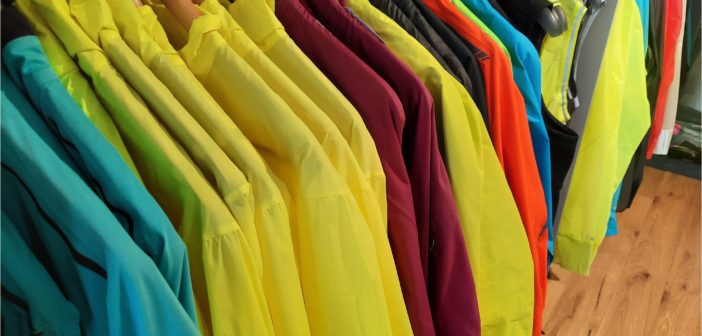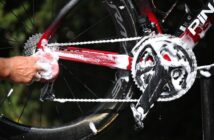Rachel is back again to talk about cycling jerseys and jackets
Jerseys
When it comes to selecting your jersey you have an array of options and that’s even before you select the sleeve length! A cycling jersey will keep you warm in cold weather and cooler in warm weather. It will help keep you comfortable on the bike, prevent sunburn and give you a place to store most things you need to carry (banana, energy bar, packable jacket, coffee money, phone and tissues!). Please prevent injury by not carrying your pump in your back pocket! Get it mounted on the bike.
Road jerseys typically have a longer back, shorter front and a higher neck shape and sleeves shaped to fit when in the bike position. I would recommend you wear a base layer underneath your cycling jersey to wick the sweat. Road jerseys come in different styles and cuts and you can spend anything from €50 to €200 plus on jersey. Look for quality such as YKK zips (you do not want zip failure while out) and minimal seams.
Off road jerseys are baggier than their road going cousins to accommodate body armour. They will have a low neck line to accommodate the constant movement on the bike and made from a material that is more robust then a road jersey. Off road jerseys won’t have pockets on them as most riders will have some type of hydration pack or rucksack on their back.
Some other points to note: check the manufacturers size chart, as a large with one brand won’t be the same as another. Even better try on in a store to avoid the constant returning of goods dilemma. Get an extra thumbs up on and off road by matching your cycling jersey to the colour of your bike!
Our full range of Jerseys can be found HERE
Jackets
Selecting the style of jacket you wear depends on the weather conditions. There are a couple of types of jackets – rain or just wind proof. Decent rain jackets will have taped seams. Wind jackets don’t have tapes seams. Check for breathability as you don’t want to feel like you are wearing a bin liner / boil in a bag! Also check for packability. Can you fold it in in to your back pocket or store it somewhere on the bike.
Windproof jackets main purpose is to keep the wind out. By doing this it doesn’t evaporate the sweat from your body that quickly and cool you down too much. Windproof jackets will feature a high collar perhaps with a fleece lining, a long back and sleeves long enough to overlap gloves and seal out the cold. They will usually have mesh on the side and back for breathability.
Most if not all rain jackets will display a rain rating. This demonstrates how long the jacket will stay waterproof depending on the volume. Table below:
| Waterproof Rating (mm) | Water Resistance Provided | Conditions |
| 0-5,000 mm | No resistance to some resistance to moisture. | Light rain, dry snow, no pressure. |
| 6,000-10,000 mm | Rainproof and waterproof under light pressure. | Light rain, average snow, light pressure. |
| 11,000-15,000 mm | Rainproof and waterproof except under high pressure. | Moderate rain, average snow, light pressure. |
| 16,000-20,000 mm | Rainproof and waterproof under high pressure. | Heavy rain, wet snow, some pressure. |
| 20,000 mm+ | Rainproof and waterproof under very high pressure. | Heavy rain, wet snow, high pressure. |
Rain jackets will have a long back with a grippy seem on the bottom to prevent the jacket moving up your back. It will also have tight cuffs and high neck to prevent water rolling down your back or up your arms. It should also be worn tight so as you aren’t billowing in the wind.
Jackets for mountain bikers share many traits with road verison. The big difference is that they are a lot baggier and in some cases have a hood. The material is waterproof, breathable and more durable to reflect the harsher conditions such as falls and tree snagging. The negative side of the bagginess is that the jackets are not packable meaning that they cannot be rolled up and put away. These jackets will also have a have a rain rating.
Our full range of jackets can be found HERE
 Rachel’s Top Tip;
Rachel’s Top Tip;
When washing your cycling clothing always zip them up and turn them inside out. Doing this will help protect the print on the jersey and prevent loose zips damaging the rest of your cycling clothing




